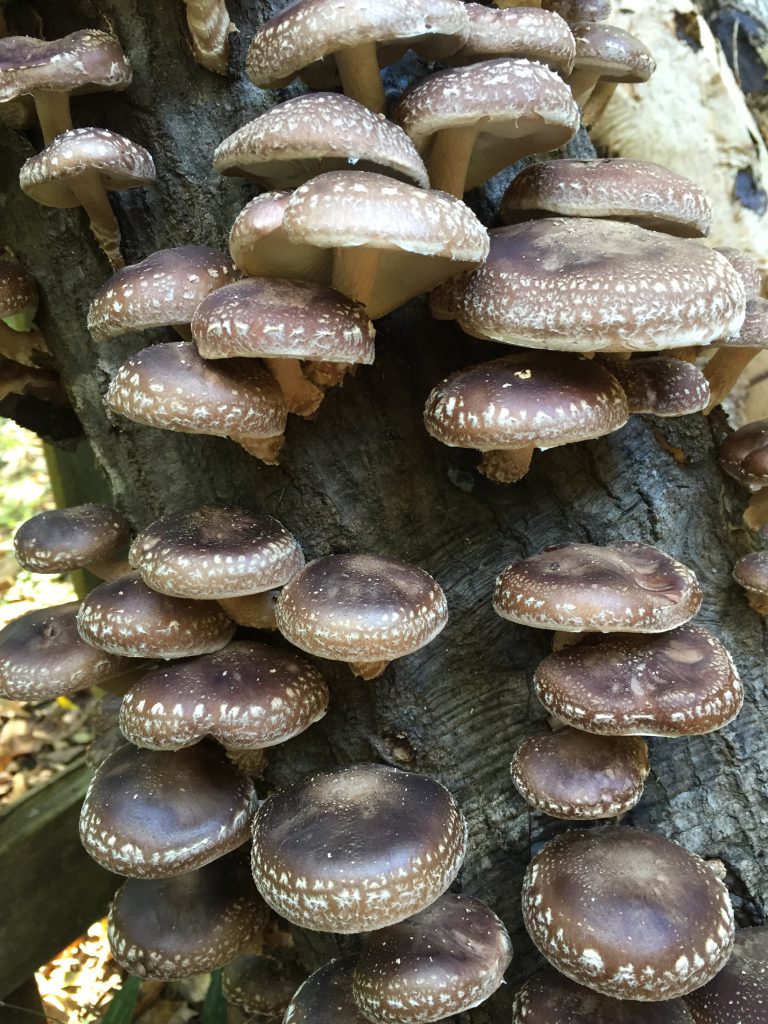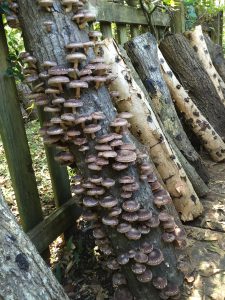
Growing up, I was never too fond of mushrooms. To me, their only purpose was to ruin a perfectly good pizza. As I got older, I started to warm up slightly toward raw button mushrooms in salads – with enough dressing, that is. But it wasn’t until I experienced my first taste of fresh shiitake mushrooms (Lentinula edodes) – introduced to me sautéed in butter – that I truly began to understand their intrigue. Their rich, almost smoky flavor, could transform any dish into something spectacular.
It was with the shiitakes, locally grown on a small Panhandle farm, that I finally developed my love for mushrooms. They could be added to so many dishes – simmered alongside chopped garlic, or in broth, a reduction of wine, or cream. Toss shiitakes with pasta, add in lieu of meat in a creamy risotto, or use them to enrich a soup or quiche.
I learned that shiitake mushrooms are not only delicious, but they are packed with nutrition, including fiber, protein, multiple vitamins, calcium, as well as an excellent source of antioxidants. But what I really found fascinating is how shiitake mushrooms are cultivated.

To understand their production, you must first understand that mushrooms are merely the fruiting body, or sexual organs, of the fungi. Mycelia, which is the vegetative portion of the fungi, colonize logs and only form spore containing mushrooms when they are ready to reproduce. The Florida Panhandle is an excellent location to grow shiitake mushrooms, as they strongly prefer to grow on oak tree logs, such as laurel oaks, which is a hardwood species native to our area.
The logs must be fresh to avoid colonization by unwanted fungi, so producers must first cut down oak trees during fall or winter, when the trees have large amounts of stored carbohydrates. It is important to do this sustainably, ideally as part of a forest thinning. The trees should be about three to eight inches in diameter and should be cut to about four-foot lengths.
The next step is to inoculate the logs with shiitake spawn. You can purchase shiitake spawn as either plugs or sawdust form. It is important to get a strain that does well in our climate, so make sure to do some research, such as learning about strains through the North American Mycological Association.
To inoculate, drill holes into the logs and insert the spawn with a plunger, a hammer, or a turkey baster, depending on the form of spawn. The holes should then be coated with hot wax to protect the spawn from drying out and from becoming contaminated. The logs then incubate under shade with proper moisture and aeration for about six to 18 months, giving the mycelia time to colonize the log, which includes digesting decomposing organic material to absorb nutrients.
The mycelia will fruit for about a week, and will then need a rest period of eight to 12 weeks before fruiting again. Logs fruit for about four years, but are typically more productive in the second and third year during the spring or fall. Harvest the mushrooms daily by cutting them at the base, and place in a box and refrigerate until use. By immersing the logs in cold water or chilling in cold storage, you can encourage the logs to fruit, but this process may make your logs less productive over time. When the bark begins to slough off, production will slow down and eventually stop.
For more information on growing shiitake mushrooms, visit the UF/IFAS Small Farms Mushroom Production website.
 0
0
